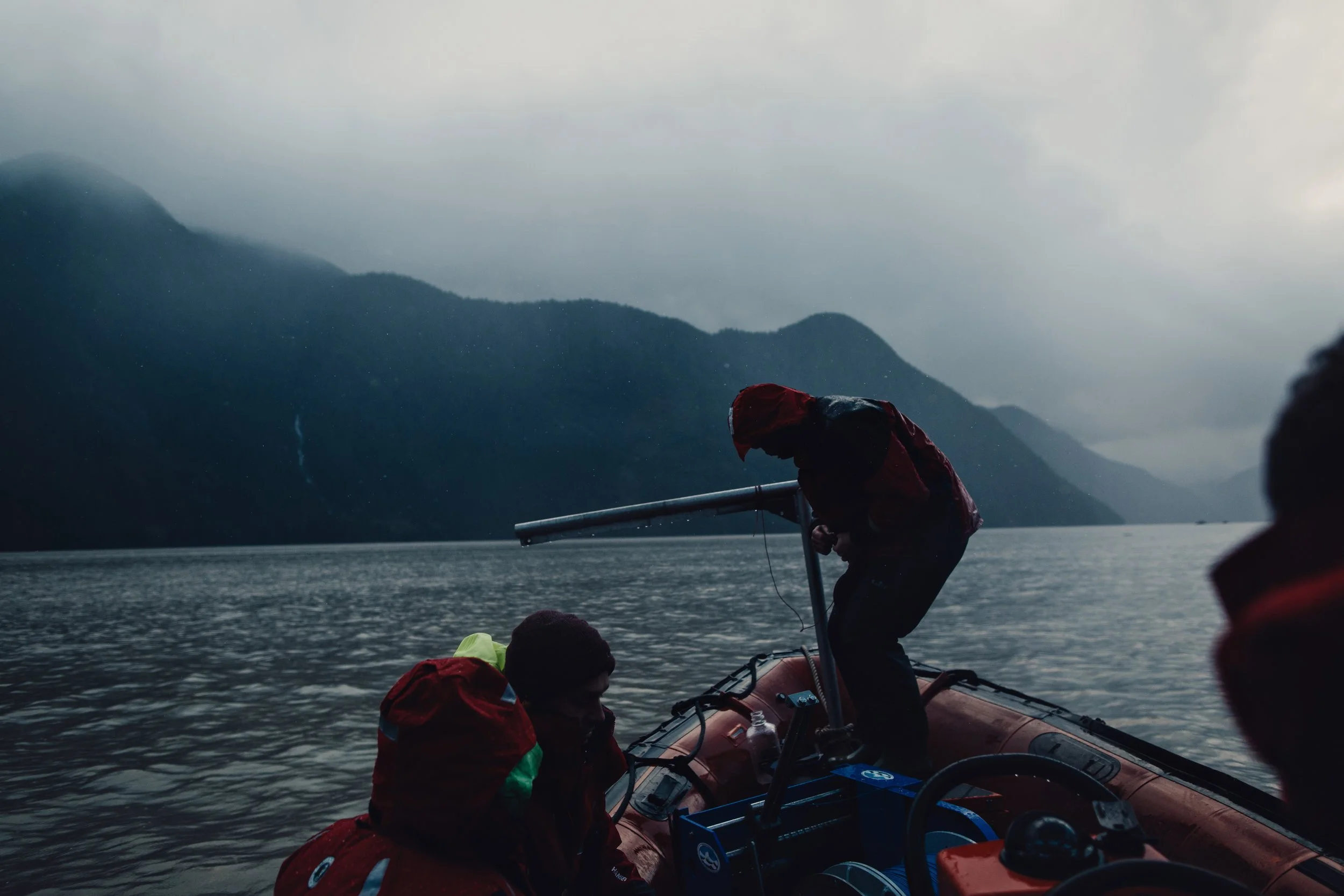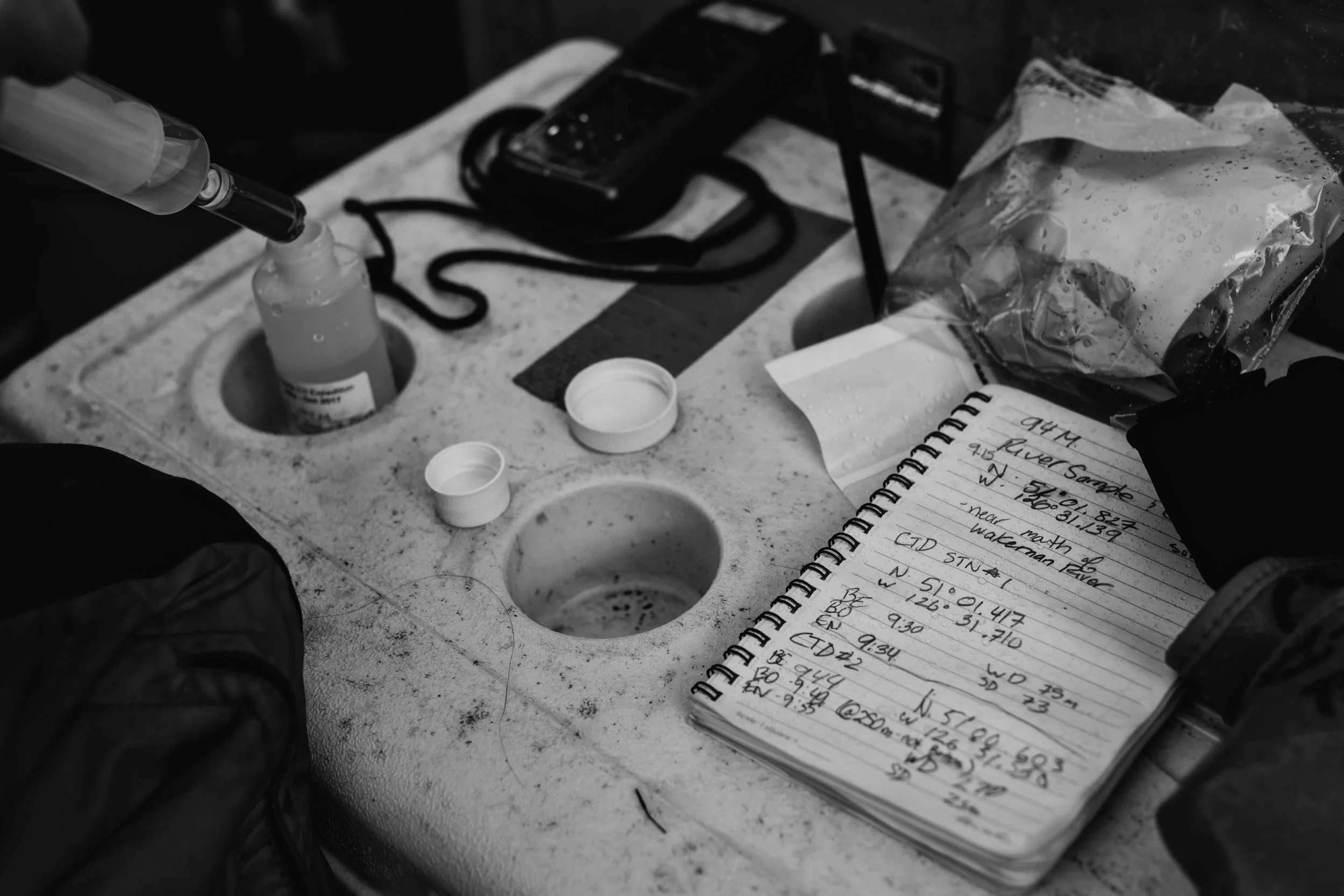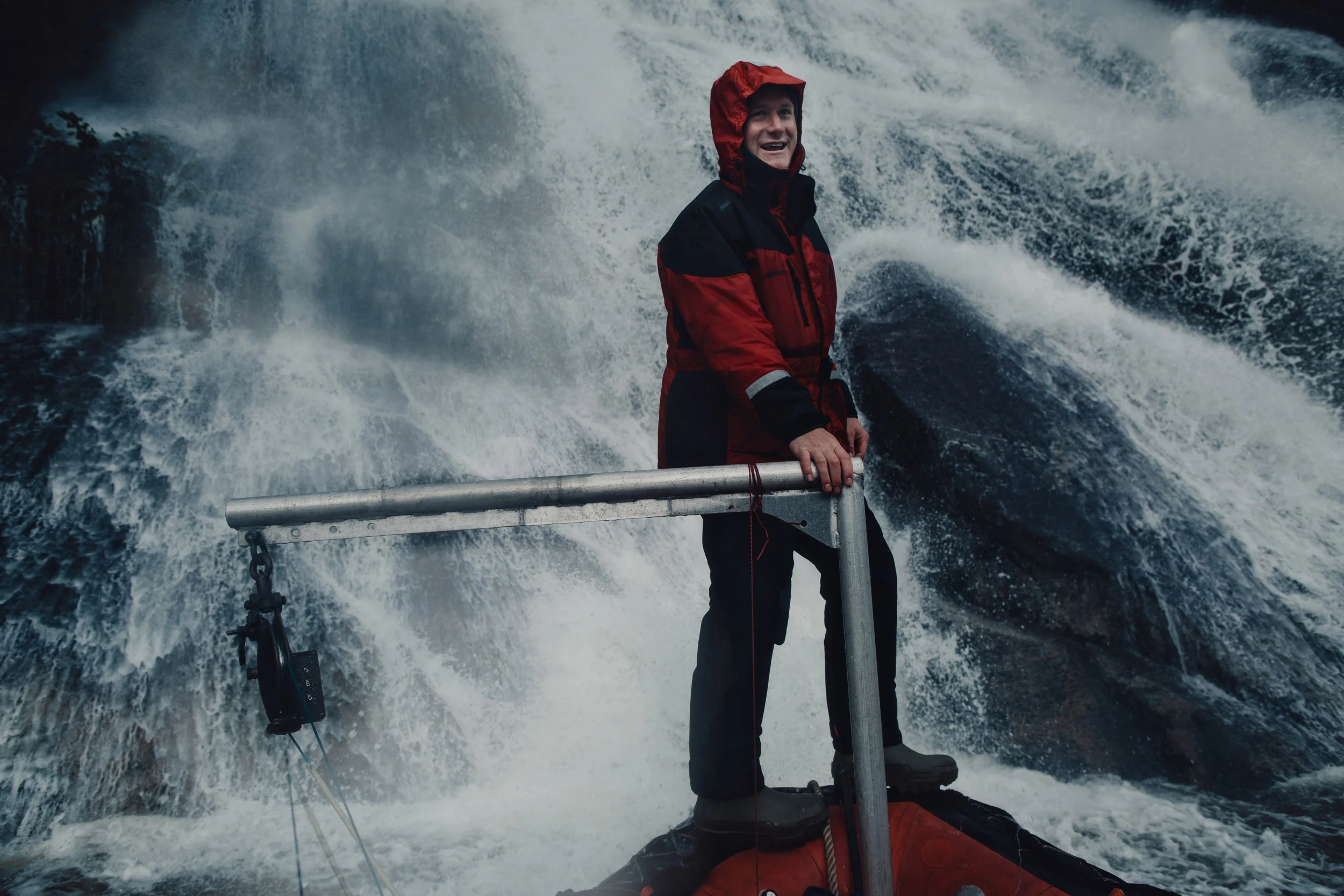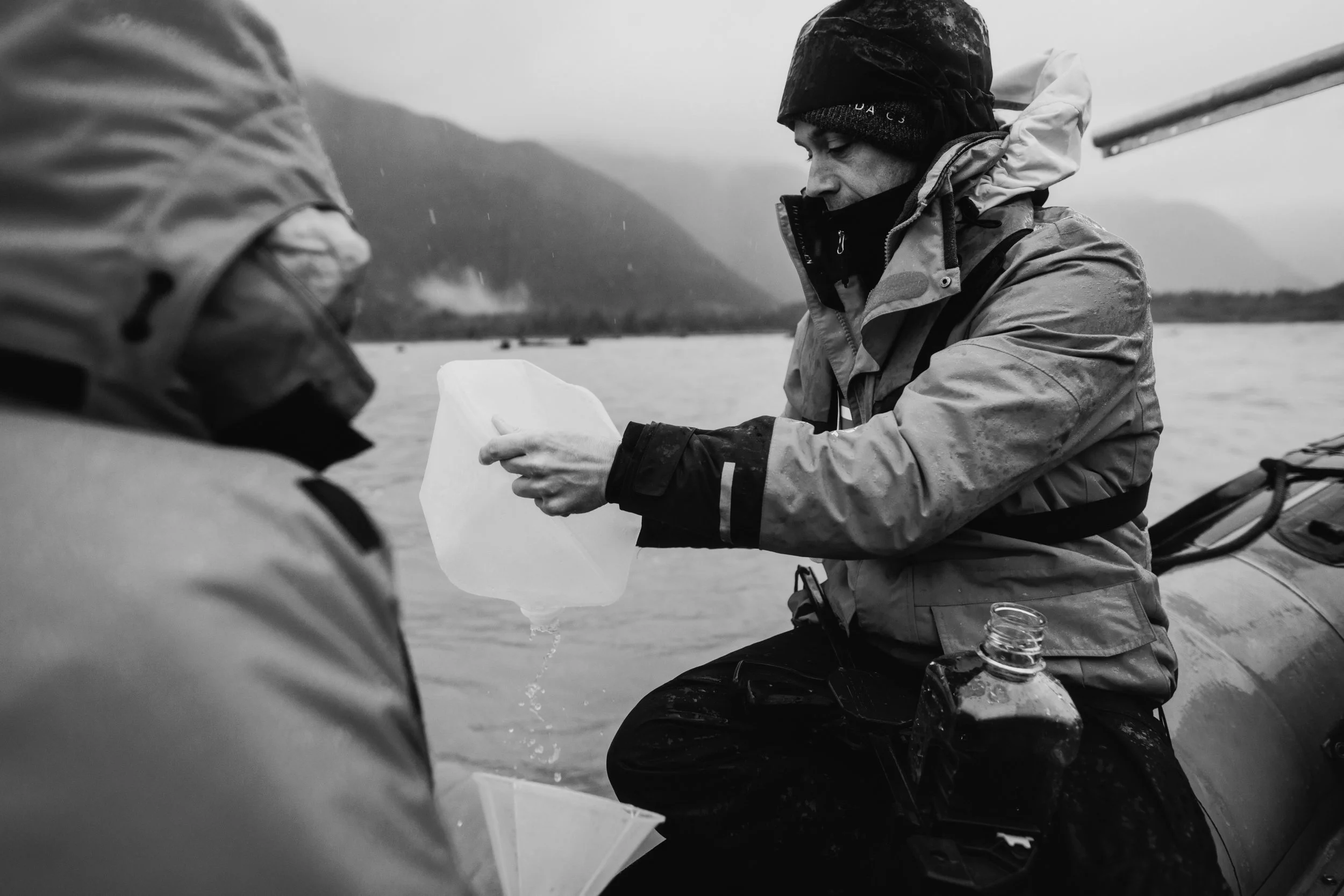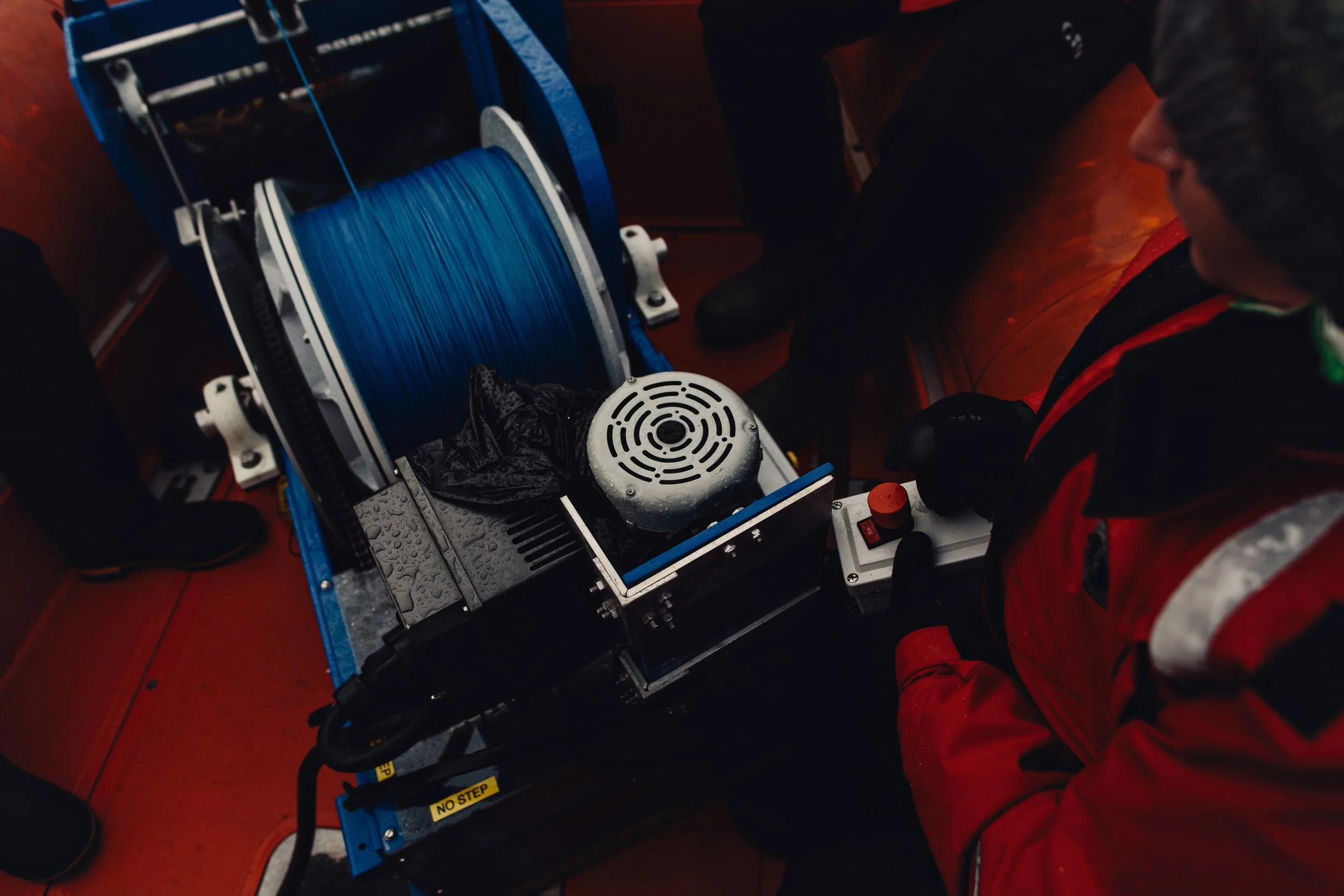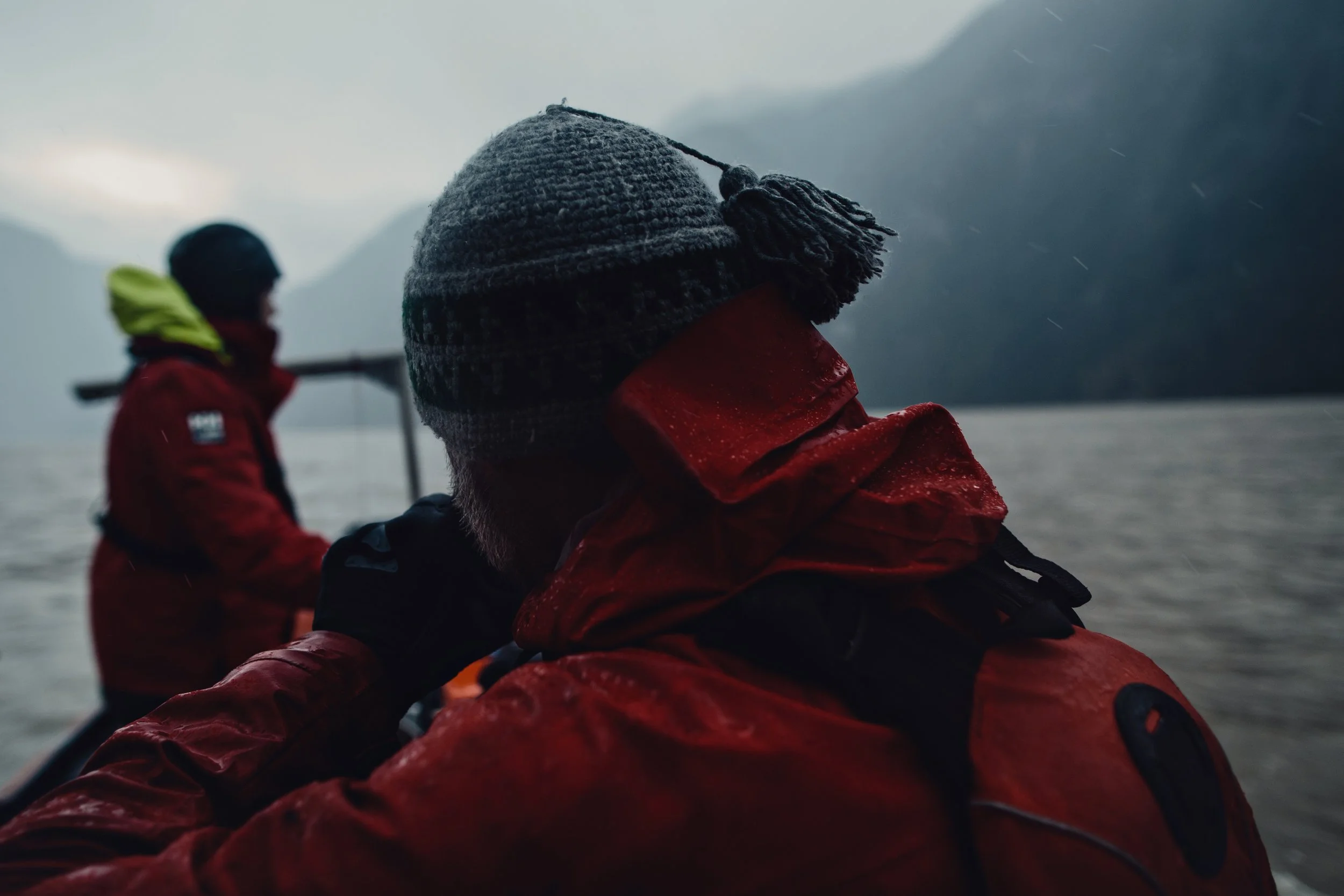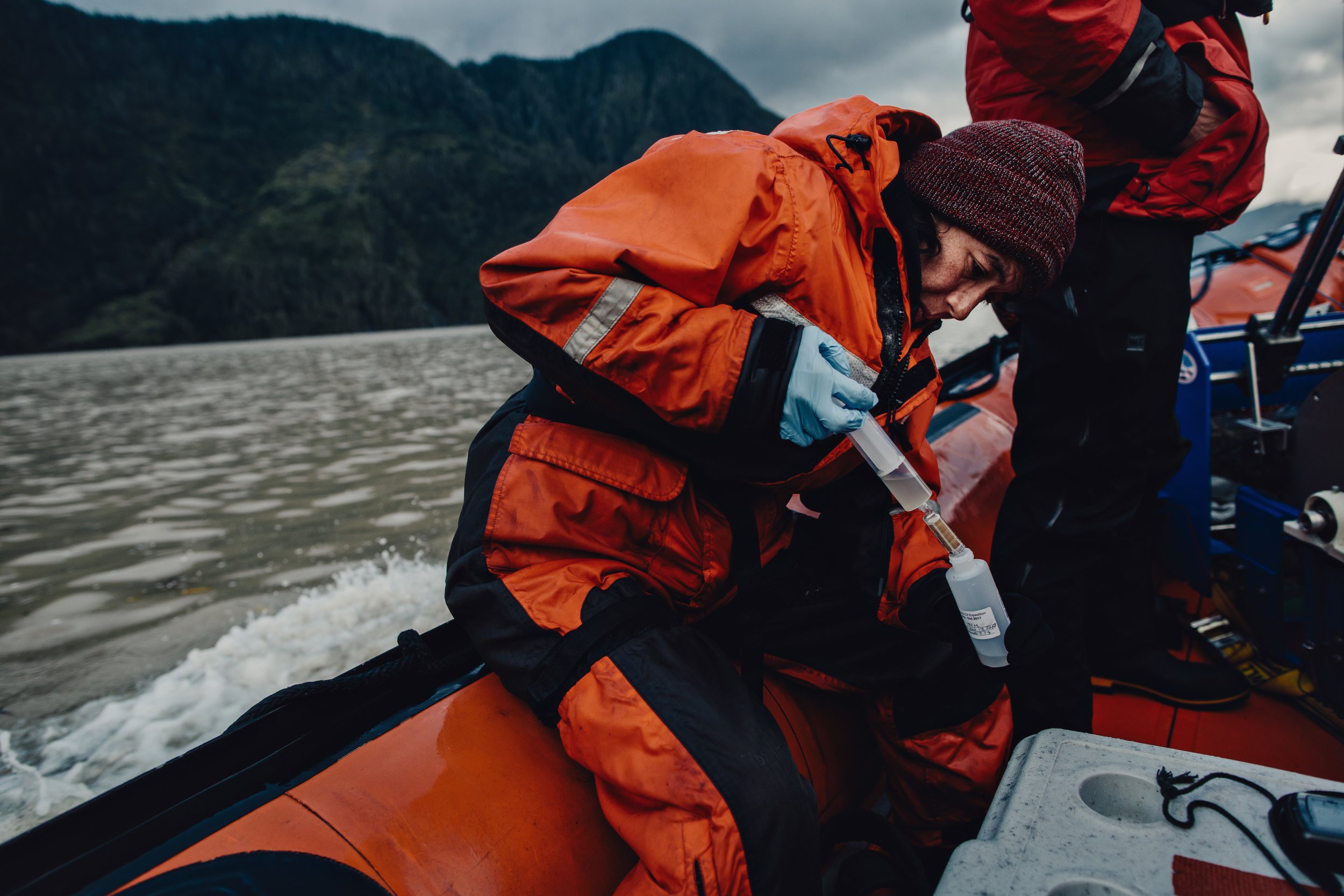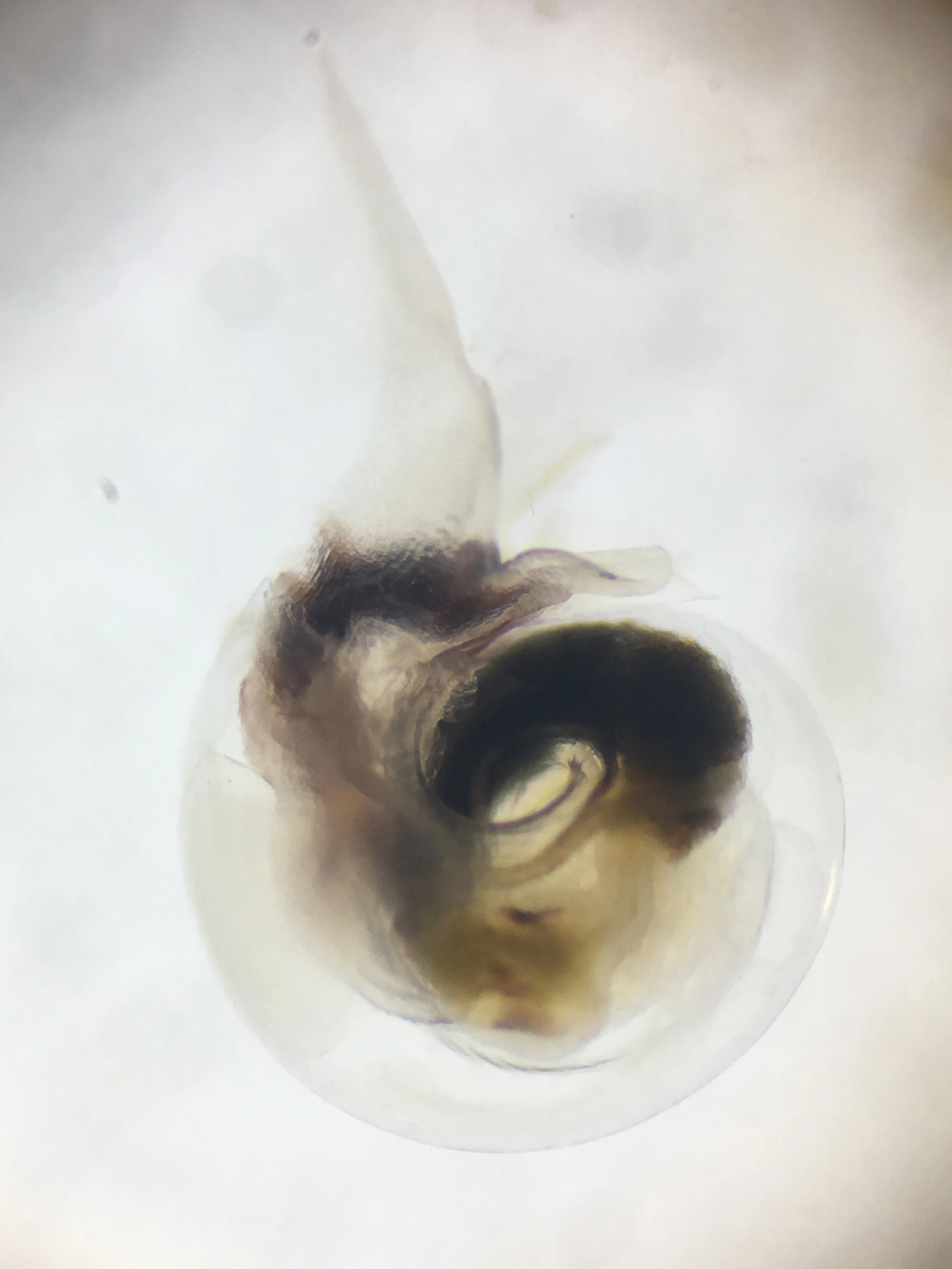The Sea Around Us
“It is a curious situation that the sea, from which life first arose should now be threatened by the activities of one form of that life. But the sea, though changed in a sinister way, will continue to exist; the threat is rather to life itself.”
― Rachel Carson, The Sea Around Us
In the fall of 2017 I had the opportunity to photograph scientists traveling with the C3 expedition as they gathered water samples for eDNA analysis along the B.C. coast.
Scientists already know that climate change is pushing species into unfamiliar territory. While the movement of plants and terrestrial life is visible, what about those changes that take place under the surface? Using the technique of gene sequencing, scientists are now able to paint a much fuller picture of which marine species are where, simply by testing the water.
The capture of eDNA or ‘environmental DNA’ is a new technique already being employed by Canada’s Department of Fisheries and Oceans to keep track of species, both native and invasive.
The practice, used in Canada since around 2013, is helping environmental managers get a more accurate sense of what species live in or migrate through a specific region and — rather than relying on difficult, expensive and, at-times, flawed use of by-catch or radar techniques — the capture of eDNA is as simple as tipping a cup off the side of your boat.
Because of this, eDNA represents a potential boon for the practice of citizen science. Anyone with a little instruction and a clean plastic vessel can technically collect samples representing major research value to scientists back at the lab.
